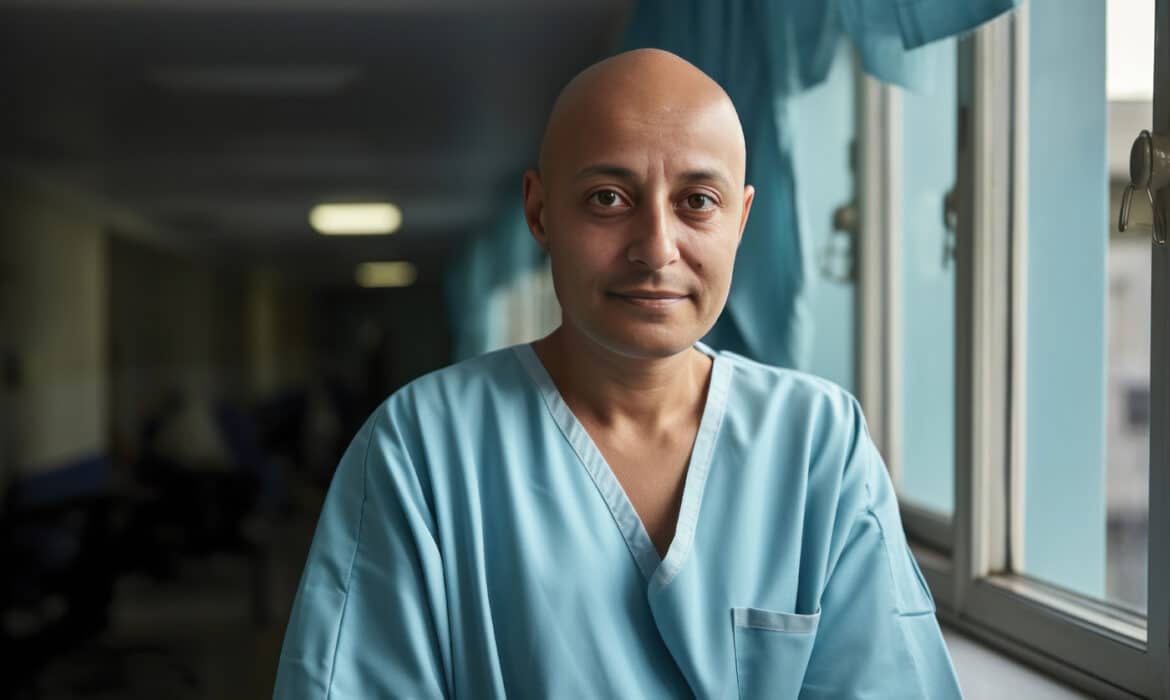Researchers have found one possible reason and continue to investigate ways to manage risk
Fact checked by Derick Wilder
Andrew Lane, MD, PhD, was researching leukemia in 2017, sequencing the cancerous cells’ genomes, when he noticed a higher rate of leukemia in men. The occurrence was something doctors had recognized in other cancers since the 1950s, but they remained unsure of the cause.
To get to the bottom of it, Lane and his colleagues at Dana-Farber Cancer Institute and other Boston institutions turned to a database of different cancer genomes begun in 2005.
The team partnered with computational biologists to analyze 4,000 samples from 20 different cancer types to determine differences between the sexes and cancer development. After crunching the numbers, Lane remembers meeting with one biologist who told him, “It’s funny. All these genes that came up as statistically significant are on the X chromosome.”
Lane’s jaw dropped. Men, they found, had mutations more frequently in their cancer cells. “It felt like it was something that was just true. And it had been sitting out there,” he says.
The researchers, who came from the Broad Institute of Harvard and MIT, as well as Massachusetts General Hospital, published their findings in a 2017 Nature Genetics paper. The study was one of the first to document a genetic reason for sex bias in cancer.
What are the chances?
Men have a 1 in 2 chance of being diagnosed with cancer during their lifetimes, while women have a 1 in 3 chance, according to the National Cancer Institute. Additional data show that from 2008 to 2012, men had more than a 20% higher risk of developing any cancer compared to women. In some cancers, other than sex-specific types such as cervical and prostate, the rate of developing cancer in men is only slightly higher than in women. In others, like kidney and bladder cancers, the rates are two or three times higher.
Researchers have tried to parse out why. At first, they thought that the difference was largely due to lifestyle choices. Historically, men have engaged in more risky behaviors, such as smoking and drinking, than women, resulting in higher rates of lung and bladder cancers. Yet, as women increasingly engaged in the same behaviors, the rates of those cancers remained higher in men than in women.
Ajaz Khan, MD, medical oncologist at City of Hope Cancer Center Chicago, says that statistics from the past couple of years in the Chicagoland area, as well as nationally, show the rates for some cancers, particularly lung and upper aerodigestive cancers, are closing in on each other.
Still, the rates of other cancers have stayed stubbornly uneven, so researchers are now looking into factors beyond lifestyle choices, such as hormones, genetics, and family history to better determine and prevent an individual’s risk of developing cancer. More and more, they’re also looking at the cancer cells’ DNA.
DNA research points to the reasons
When genetic sequencing became more widely available and less expensive in the early 2000s, researchers began more regularly collecting DNA from cancerous cells. They compiled the data within the National Institute of Health’s Cancer Genome Atlas Program, a publicly available database that could create pathways to diagnose, treat, and prevent cancer.
Men have XY chromosomes, while women have XX. Though one copy of the X chromosome becomes inactive in people assigned female at birth, some of these genes appear to escape the inactivation process, making two copies available to stave off cancer.
In the 2017 Nature Genetics study, Lane and his colleagues reported that women have more copies of tumor suppressor genes that keep cancer from growing out of control. Therefore, when one copy mutates, another keeps the cancer at bay.
“Simply by virtue of having an extra copy, the female cells have a little bit of extra protection against that cell becoming a cancer cell, and that could explain why we see this bias in the mutations in the male cells,” Lane says. “I don’t think it’s the only answer; it’s part of the answer.”
Still, men and women can both take steps in their daily lives to lower their risk of cancer, including incorporating healthy lifestyle choices, getting screened (which women tend to do more frequently than men), and following screening recommendations.
Drinking alcohol only moderately, exercising at least 150 minutes a week, and not smoking help prevent cancer, and reduce the risk of cancer recurrence, Khan says.
Doctors only screen for a select set of cancers, such as breast and cervical cancer in women, colon and lung cancer in both sexes, and prostate cancer in men; however, knowledge of a family history of cancer could lead a doctor to suggest the person screen for specific types at an earlier age, if the cancers exist within the family or the person has a higher predisposition to developing them.
“Those are the current screening tools and methodologies that we have available,” Khan says. If you know of a familial risk and make practitioners aware of it, he adds, “I’m sure they’ll do their due diligence with regards to specific screening.”














